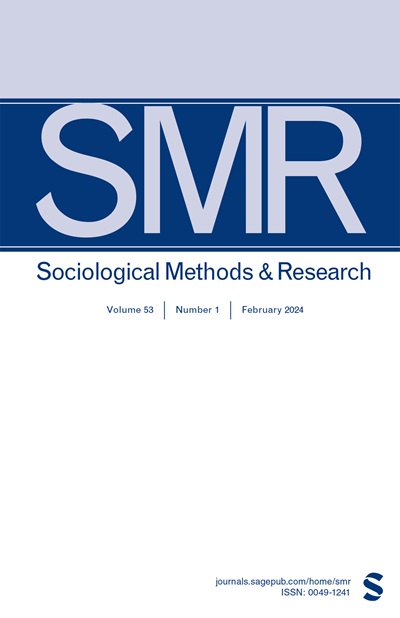两个时间尺度下的时间到事件数据分析。从同居过渡的应用程序
IF 6.5
2区 社会学
Q1 SOCIAL SCIENCES, MATHEMATICAL METHODS
引用次数: 0
摘要
时间到事件数据的模型基于状态之间的转换速率,为了定义经历事件的此类危险,需要确定过程演变的时间尺度。然而,在许多应用中,一个以上的时间尺度可能很重要。在这里,我们将演示如何在两个时间维度上对危险进行联合建模。该模型假设一个光滑的二元危险函数,该函数由二维P样条估计。我们提供了一个R包来分析具有两个时间尺度的事件历史数据。作为一个例子,我们模拟了从同居到结婚或分居的过渡,同时随着个人的年龄和同居的持续时间。我们使用了来自德国家庭调查小组(pairfam)的数据,并证明考虑这两个时间尺度同样重要,可以为从同居到结婚或分居的过渡提供额外的见解。本文章由计算机程序翻译,如有差异,请以英文原文为准。
Analysis of Time-to-Event Data With Two Time Scales. An Application to Transitions out of Cohabitation
Models for time-to-event data are based on transition rates between states, and to define such hazards of experiencing an event, the time scale over which the process evolves needs to be identified. In many applications, however, more than one time scale might be of importance. Here, we demonstrate how to model a hazard jointly over two time dimensions. The model assumes a smooth bivariate hazard function, and the function is estimated by two-dimensional P -splines. We provide an R package for the analysis of event history data with two time scales. As an example, we model transitions from cohabitation to marriage or separation simultaneously over the age of the individual and the duration of the cohabitation. We use data from the German Family Panel (pairfam) and demonstrate that considering the two time scales as equally important provides additional insights about the transition from cohabitation to marriage or separation.
求助全文
通过发布文献求助,成功后即可免费获取论文全文。
去求助
来源期刊

Sociological Methods & Research
Multiple-
CiteScore
16.30
自引率
3.20%
发文量
40
期刊介绍:
Sociological Methods & Research is a quarterly journal devoted to sociology as a cumulative empirical science. The objectives of SMR are multiple, but emphasis is placed on articles that advance the understanding of the field through systematic presentations that clarify methodological problems and assist in ordering the known facts in an area. Review articles will be published, particularly those that emphasize a critical analysis of the status of the arts, but original presentations that are broadly based and provide new research will also be published. Intrinsically, SMR is viewed as substantive journal but one that is highly focused on the assessment of the scientific status of sociology. The scope is broad and flexible, and authors are invited to correspond with the editors about the appropriateness of their articles.
 求助内容:
求助内容: 应助结果提醒方式:
应助结果提醒方式:


